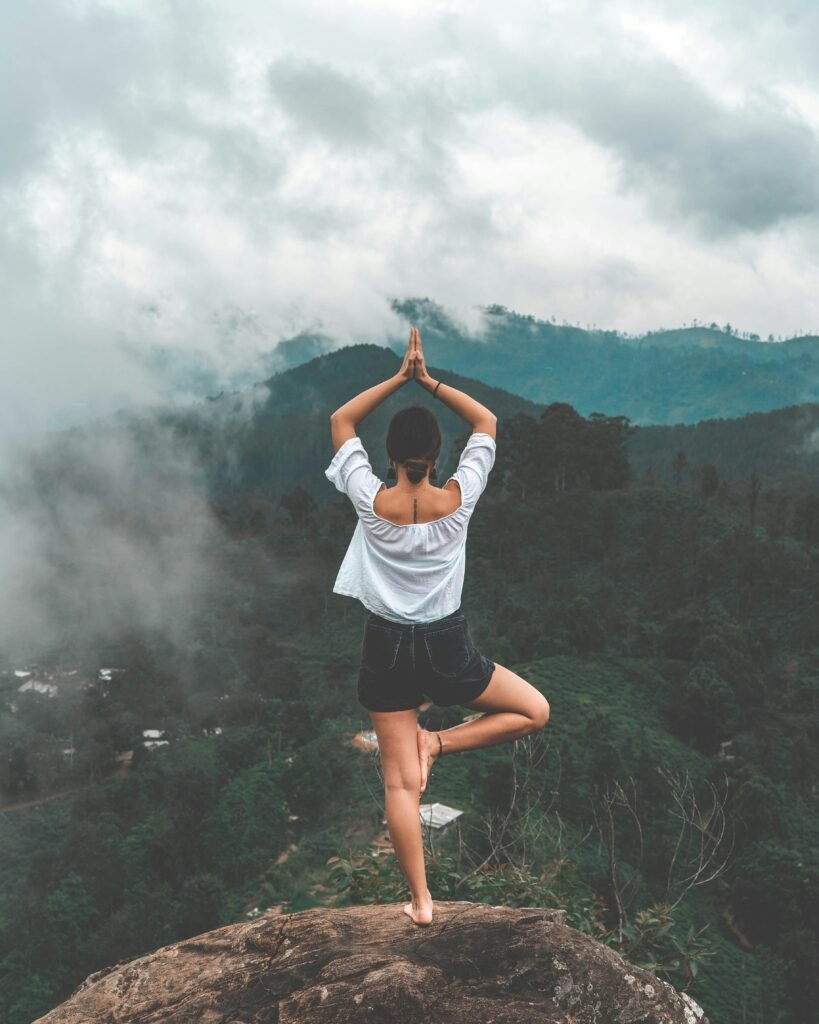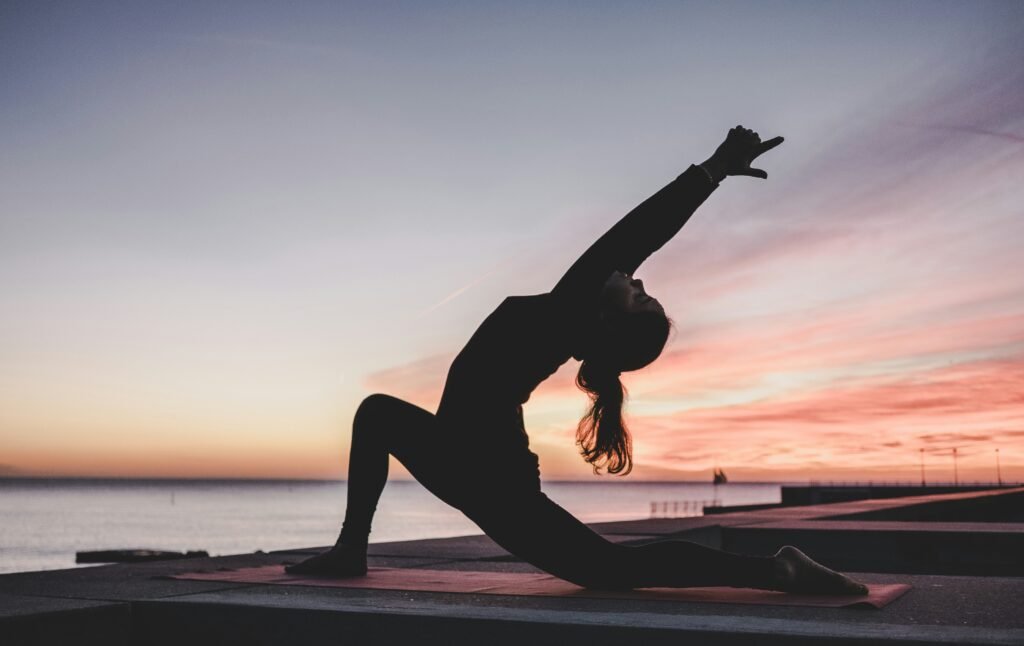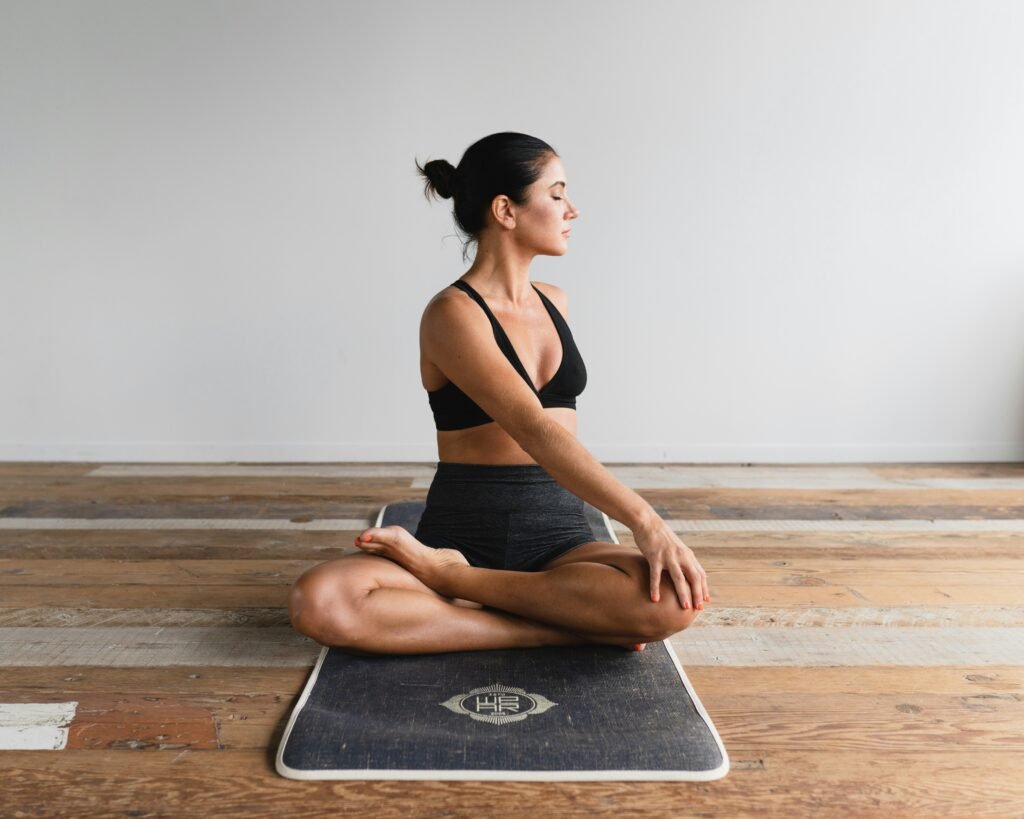Beginner’s Guide to Yoga and Pilates at Home
Welcome to your Beginner’s Guide to Yoga and Pilates at Home! In this article, you will learn the basics of starting a yoga and Pilates routine in the comfort of your own home. From setting up a peaceful space to finding the right online videos, we will explore how to begin your journey to a healthier mind and body through these rejuvenating practices. Get ready to stretch, breathe, and strengthen your way to a happier and healthier you! Have you ever thought about starting a yoga or Pilates practice at home but didn’t know where to begin? Don’t worry, you’re not alone! Many people are interested in these ancient mind-body practices but are unsure how to get started. In this beginner’s guide, we will walk you through everything you need to know to begin a successful yoga and Pilates routine in the comfort of your own home. From basic poses to essential equipment, we’ve got you covered!

This image is property of images.unsplash.com.
Why Choose Yoga and Pilates for Your Home Workout Routine
Yoga and Pilates are both excellent choices for a home workout routine, as they focus on strength, flexibility, and mindfulness. These practices can help increase your overall fitness level, reduce stress, and improve your mental well-being. Plus, you can do them from the comfort of your living room, without the need for expensive equipment or gym memberships. Whether you’re looking to build strength, increase flexibility, or simply relax and unwind, yoga and Pilates are versatile practices that can be adapted to suit your individual needs.
Benefits of Yoga and Pilates
Yoga and Pilates offer a wide range of benefits for both the body and mind. From improved flexibility and strength to reduced stress and anxiety, these practices can help you achieve a healthier and happier lifestyle. By incorporating yoga and Pilates into your daily routine, you can experience the following benefits:
- Increased flexibility and range of motion
- Improved strength and muscle tone
- Better posture and alignment
- Reduced stress and anxiety
- Enhanced relaxation and mindfulness
- Improved balance and coordination
Incorporating yoga and Pilates into your home workout routine can help you achieve your fitness goals while also providing a sense of calm and well-being in your daily life. Whether you’re a beginner or an experienced practitioner, these practices offer something for everyone.
Getting Started with Yoga and Pilates Equipment
One of the great things about practicing yoga and Pilates at home is that you don’t need a lot of fancy equipment to get started. In fact, all you really need is a yoga mat and some comfortable workout clothes. However, there are a few additional pieces of equipment that can enhance your practice and help you get the most out of your workouts.
Essential Equipment for Yoga and Pilates at Home
When setting up your home yoga or Pilates studio, there are a few key pieces of equipment that can make your practice more enjoyable and effective. Here are some essential items to consider:
| Item | Description |
|---|---|
| Yoga Mat | Provides cushioning and grip for yoga poses |
| Yoga Blocks | Assist with alignment and support in poses |
| Yoga Strap | Helps deepen stretches and improve flexibility |
| Pilates Ball | Adds challenge and variety to Pilates workouts |
| Resistance Bands | Provides added resistance for strength training |
By investing in a few basic pieces of equipment, you can create a comfortable and functional space for practicing yoga and Pilates at home. These items are relatively affordable and can greatly enhance your practice by providing support, stability, and variety in your workouts.
Setting Up Your Home Workout Space
Creating a dedicated space for your yoga and Pilates practice at home can help you stay focused and motivated. Choose a quiet and clutter-free area where you can comfortably move and stretch without any distractions. Use your essential equipment to set up a simple and inviting workout space that inspires you to practice regularly.
Keep your yoga mat unrolled and ready to use, with any additional props or equipment within arm’s reach. Consider adding some calming elements to your space, such as candles, plants, or soft lighting, to create a soothing atmosphere for your practice. By setting up a designated workout area in your home, you can make it easier to incorporate yoga and Pilates into your daily routine.

This image is property of images.unsplash.com.
Beginning Your Yoga Practice at Home
Starting a yoga practice at home can be a rewarding and empowering experience. Whether you’re a complete beginner or have some experience with yoga, there are a few key principles to keep in mind as you begin your home practice. By focusing on proper alignment, breathing techniques, and gradual progression, you can build a strong foundation for your yoga practice and avoid injury.
Basic Yoga Poses for Beginners
If you’re new to yoga, it’s important to start with simple and accessible poses that allow you to focus on alignment and breath. Here are a few basic yoga poses that are perfect for beginners:
-
Mountain Pose (Tadasana): Stand tall with your feet hip-width apart, arms by your sides, and shoulders relaxed. Engage your core and lengthen your spine as you breathe deeply.
-
Downward-Facing Dog (Adho Mukha Svanasana): Start on your hands and knees, then lift your hips up and back to create an inverted V shape. Press your hands and feet into the mat as you lengthen your spine.
-
Warrior II (Virabhadrasana II): Step your feet wide apart, then bend your front knee over your ankle as you stretch your arms out to the sides. Keep your hips square and gaze over your front hand.
-
Child’s Pose (Balasana): Sit back on your heels with your knees apart, then fold forward and rest your forehead on the mat. Extend your arms out in front of you and take slow, deep breaths.
By practicing these basic poses regularly, you can improve your strength, flexibility, and balance while learning the fundamentals of yoga. Focus on proper alignment, mindful breathing, and listening to your body as you move through each pose. With time and practice, you’ll build confidence and skill in your yoga practice at home.
Incorporating Breathwork and Meditation
Breathwork and meditation are essential components of a well-rounded yoga practice. By focusing on the breath and cultivating mindfulness, you can enhance the physical, mental, and emotional benefits of your practice. Try incorporating the following breathing exercises and meditation techniques into your yoga routine:
-
Deep Belly Breathing: Inhale deeply through your nose, filling your belly with air. Exhale slowly through your mouth, emptying your lungs completely. Repeat this deep breathing pattern for several breath cycles to calm your mind and body.
-
Mindful Meditation: Find a comfortable seated position and close your eyes. Focus on your breath as it moves in and out of your body, bringing your attention to the present moment. Allow thoughts to come and go without judgment, returning to your breath whenever you feel distracted.
By practicing breathwork and meditation alongside your yoga poses, you can deepen your mind-body connection and experience a greater sense of relaxation and calm. These techniques can help reduce stress, improve focus, and cultivate a sense of inner peace in your daily life.
Starting Your Pilates Practice at Home
Pilates is a low-impact exercise system that focuses on core strength, stability, and alignment. It can help improve posture, balance, and muscle tone while also increasing flexibility and coordination. If you’re new to Pilates, starting a home practice is a great way to learn the basics and build a strong foundation for your workouts.
Essential Principles of Pilates
Pilates is based on a set of foundational principles that guide the practice and ensure safe and effective movement. Understanding these principles can help you get the most out of your Pilates workouts and prevent injury. Here are some key principles to keep in mind as you start your Pilates practice at home:
-
Breathing: Pilates emphasizes deep, diaphragmatic breathing to engage the core and support movement. Focus on inhaling through the nose and exhaling through the mouth to activate the muscles of the torso.
-
Core Engagement: The core muscles, including the abdominals, back, and pelvic floor, are the powerhouse of Pilates. Maintain a strong and stable core throughout your movements to support your spine and improve your alignment.
-
Precision: Pay attention to proper alignment and form in each exercise, focusing on quality of movement over quantity. Move slowly and mindfully through each exercise to ensure precision and control.
-
Flow: Pilates exercises are designed to flow seamlessly from one to the next, creating a sense of rhythm and continuity in your workout. Connect your breath with your movement to maintain a smooth and fluid practice.
By incorporating these principles into your Pilates practice, you can enhance your strength, stability, and body awareness while reducing the risk of injury. Focus on the fundamentals of Pilates as you move through each exercise, paying attention to your breath, alignment, and engagement of the core muscles.
Basic Pilates Exercises for Beginners
If you’re new to Pilates, there are several foundational exercises that can help you build core strength, improve stability, and increase flexibility. These basic exercises target key muscle groups and movement patterns, providing a solid foundation for your Pilates practice. Here are a few beginner-friendly Pilates exercises to try at home:
-
The Hundred: Lie on your back with your legs in a tabletop position and arms by your sides. Lift your head, neck, and shoulders off the mat as you pump your arms up and down. Breathe in for five counts and out for five counts, aiming for 100 total breath cycles.
-
Single Leg Stretch: Lie on your back with your knees in toward your chest and hands on your ankles. Extend one leg out and bring the other knee in, switching legs with each breath. Keep your core engaged and spine stable throughout the movement.
-
Plank: Begin in a push-up position with your hands under your shoulders and legs extended behind you. Engage your core, glutes, and legs to create a straight line from head to heels. Hold this position for 30 seconds to one minute, focusing on alignment and stability.
-
Bridge: Lie on your back with your feet hip-width apart and knees bent. Press into your feet to lift your hips off the mat, creating a straight line from shoulders to knees. Squeeze your glutes and engage your core as you hold the bridge position for several breaths.
By incorporating these basic Pilates exercises into your home practice, you can develop core strength, improve stability, and enhance your overall fitness level. Focus on proper alignment, controlled movement, and breath awareness as you work through each exercise, gradually increasing the intensity and duration as you progress.

This image is property of images.unsplash.com.
Building a Sustainable Home Workout Routine
Building a sustainable home workout routine that includes both yoga and Pilates can help you stay on track with your fitness goals and maintain a healthy lifestyle. By combining these complementary practices, you can achieve a well-rounded workout that addresses strength, flexibility, balance, and mindfulness. Here are some tips for creating a balanced and sustainable home workout routine:
Establishing a Consistent Schedule
Consistency is key when it comes to maintaining a home workout routine. Set aside dedicated time each day or week for your yoga and Pilates practice, making it a priority in your schedule. Whether you prefer to practice in the morning to energize your day or in the evening to unwind and relax, find a routine that works for you and stick to it.
Mix Up Your Workouts
Variety is important for keeping your home workout routine engaging and effective. Mix up your yoga and Pilates sessions with different styles, poses, and exercises to challenge your body and prevent boredom. Try new sequences, props, or online classes to keep your practice fresh and exciting, allowing you to progress and improve over time.
Listen to Your Body
Listening to your body is essential when practicing yoga and Pilates at home. Pay attention to how you feel during and after each workout, adjusting your intensity and duration as needed. If you’re experiencing pain or discomfort, modify or skip certain poses to avoid injury and protect your body. Honor your limits and practice self-care to ensure a safe and sustainable workout routine.
Track Your Progress
Tracking your progress can help you stay motivated and accountable in your home workout routine. Keep a journal or log of your yoga and Pilates sessions, noting your achievements, challenges, and goals. Celebrate your successes and milestones, whether it’s holding a pose for longer or mastering a new exercise, to stay inspired and committed to your practice.
Stay Connected and Inspired
Staying connected with a community of like-minded individuals can provide support, inspiration, and encouragement in your home workout journey. Join online forums, social media groups, or virtual classes to connect with others who share your passion for yoga and Pilates. Share your experiences, ask questions, and stay engaged with the community to stay motivated and inspired in your practice.
By incorporating these tips and strategies into your home workout routine, you can build a sustainable and fulfilling practice that supports your health and well-being. Whether you’re a beginner or an experienced practitioner, yoga and Pilates offer endless possibilities for growth, transformation, and self-discovery. Start your journey today and discover the countless benefits of practicing yoga and Pilates at home.
